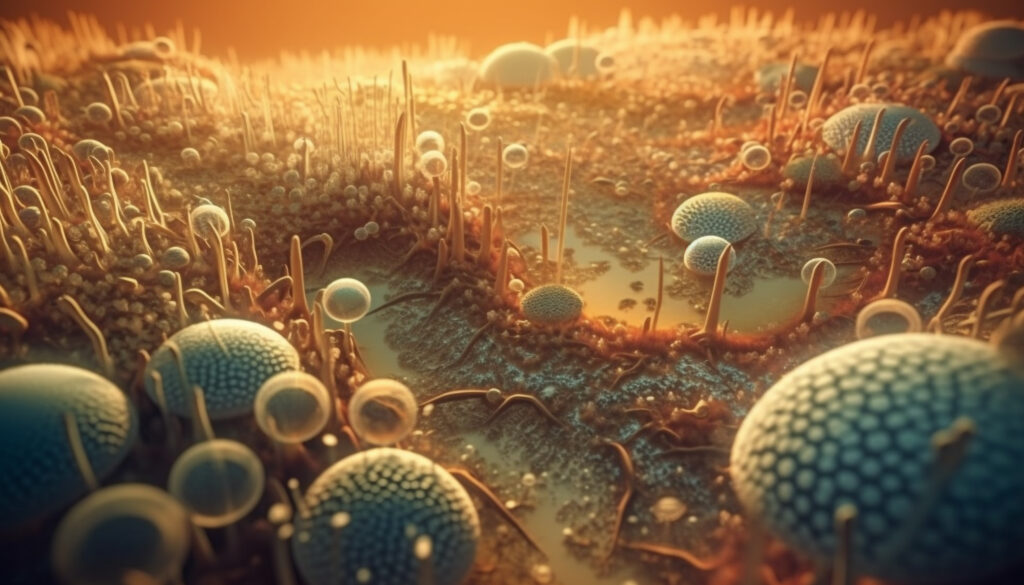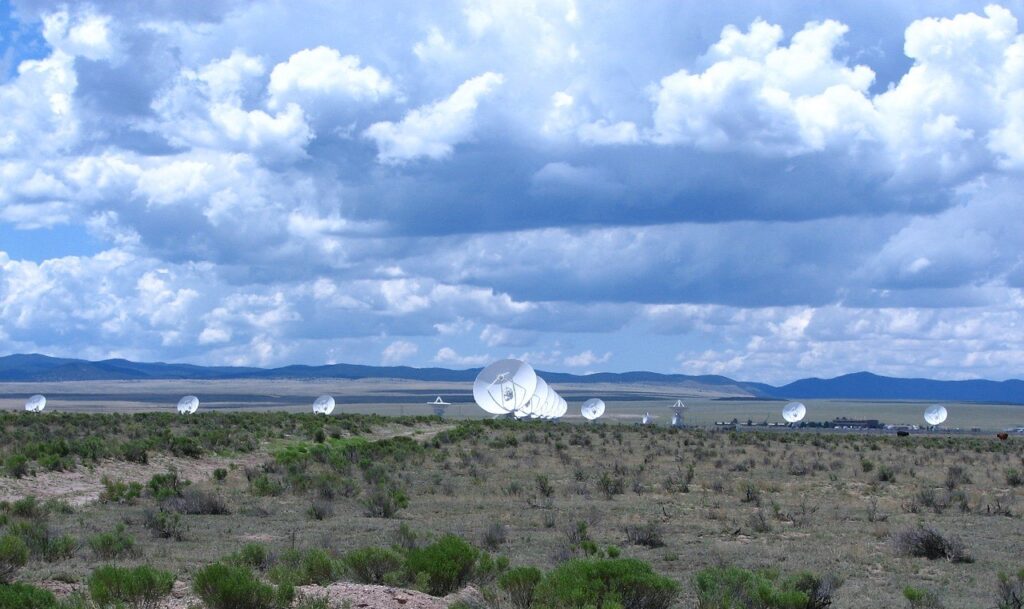The Diversity of Life Beyond Our Planet
© freepik/kjpargeter
Extraterrestrial life, also known as alien life, refers to life forms that originate from celestial bodies other than Earth. To date, there has been no definitive detection of extraterrestrial life. The spectrum of potential alien life spans from basic forms like prokaryotes to potentially intelligent beings, potentially heralding civilizations that could surpass humanity in advancement.
Defining alien life is the process of establishing what constitutes life beyond the scope of our planet. It involves considerations of universal attributes of life, alternative biochemistries, potential biomarkers, and the philosophical and ethical aspects of searching for and encountering alien life. The challenge lies in broadening our perspective and exploring the potential diversity of life in the universe.
TYPES

When discussing types of alien life, it’s important to remember that our knowledge is primarily based on life as we know it on Earth. Speculating about the forms life could take beyond our planet is a fascinating exercise, but it’s essential to acknowledge that these are theoretical concepts and not confirmed entities. Here are some hypothetical types of alien life:
MICROBIAL LIFE
Microbial life consists of tiny, single-celled organisms such as bacteria, archaea, and certain types of protists. These organisms are incredibly small, often too small to be seen without a microscope. Despite their size, they play critical roles in ecosystems on Earth. Microbes are versatile and have adapted to a wide range of environments, from deep-sea vents to extreme deserts. Their existence suggests the possibility of similar life forms in extraterrestrial environments, where conditions may be conducive to their survival.
BACTERIA AND ARCHAEA
Simple, single-celled organisms that do not have a nucleus. They are among the oldest forms of life on Earth.
PROTISTS
Eukaryotic microorganisms that include a variety of unicellular life forms like algae, protozoa, and slime molds.
COMPLEX SINGLE-CELLED ORGANISMS
Complex single-celled organisms, known as eukaryotes, are single-celled life forms with a distinct nucleus containing genetic material. Unlike simpler microbes, eukaryotes are more structurally advanced, often possessing specialized organelles and complex cellular machinery. They include a diverse range of organisms like algae, protozoa, and certain fungi. While complex, they remain unicellular, demonstrating the incredible diversity of life even within a single cell.
EUKARYOTES
Cells with a nucleus, containing genetic material. These can be single-celled or form more complex structures like fungi.
MULTI-CELLULAR ORGANISMS
Multi-cellular organisms are life forms composed of multiple cells that work together to form complex, organized structures. This category includes plants and animals on Earth. Unlike single-celled organisms, multi-cellular life exhibits specialized cells and tissues with distinct functions. These organisms can range from simple, like sponges, to highly complex, such as mammals. The existence of multi-cellular life implies a higher level of biological organization and potential diversity in extraterrestrial environments.
PLANTS
Organisms capable of photosynthesis, using sunlight to create energy. On Earth, they play a vital role in ecosystems.
ANIMALS
Mobile, multicellular organisms capable of movement, respiration, and complex behaviors.
INTELLIGENT LIFE
Intelligent life refers to hypothetical beings or civilizations capable of advanced cognitive abilities, self-awareness, reasoning, and complex problem-solving. These entities may possess advanced technologies, languages, and social structures. While intelligent life on Earth includes humans, the concept extends to potential extraterrestrial beings with similar or even superior intellectual capacities. The search for intelligent alien life is a significant focus of astrobiology and space exploration endeavors.
SILICON-BASED LIFE
Silicon-based life is a theoretical form of life that could potentially exist, using silicon as its fundamental building block instead of carbon, which is the basis of life on Earth. Silicon shares some chemical similarities with carbon, making it a plausible alternative for life chemistry. While no silicon-based life forms have been discovered, the concept expands our understanding of the potential diversity of life in the universe.
AMMONIA-BASED LIFE
Ammonia-based life is a theoretical form of life that could exist in environments with extremely low temperatures, such as the outer reaches of the solar system. In this hypothetical scenario, ammonia, rather than water, would serve as the primary solvent for biochemical reactions. While no ammonia-based life forms have been discovered, this concept demonstrates the potential adaptability of life to diverse and extreme environments.
METHANE-BASED LIFE
Methane-based life is a theoretical form of life that might thrive in environments with extremely low temperatures, where methane exists in liquid form. In this speculative scenario, methane, rather than water, could serve as the primary solvent for biochemical reactions. While no methane-based life forms have been discovered, this concept illustrates the potential adaptability of life to diverse and extreme environments.
ENERGY-BASED LIFE
Energy-based life is a purely speculative concept suggesting the existence of life forms that do not rely on traditional biochemical processes. Instead, these hypothetical organisms might exist as complex energy patterns, potentially harnessing energy directly from their environment. While no such life forms have been discovered, this idea challenges our conventional understanding of life and opens up intriguing possibilities for diverse forms of existence.
SUBSURFACE LIFE
Subsurface life refers to hypothetical organisms that live beneath the surface of a planet or moon, potentially in environments where conditions are more stable and hospitable compared to the surface. These life forms might thrive deep underground or within the subsurface oceans of celestial bodies like moons of gas giants. The concept of subsurface life expands our understanding of potential habitats for extraterrestrial organisms.
AI AND SYNTHETIC LIFE
AI (Artificial Intelligence) and synthetic life refer to the creation of intelligent entities through artificial means, distinct from biological organisms. AI involves the development of machines or computer systems capable of performing tasks that typically require human intelligence. Synthetic life, on the other hand, involves the engineering or creation of life forms using non-biological materials. These concepts expand our understanding of potential life forms and forms of intelligence that may exist beyond traditional biological organisms.
COMMUNICATION WITH ALIEN LIFE

The prospect of communicating with alien life is a subject that has intrigued scientists, philosophers, and enthusiasts for decades. While we have yet to make contact with beings from beyond our planet, there are several key considerations in this endeavour:
THE SEARCH FOR EXTRATERRESTRIAL LIFE
SETI is a collective effort aimed at detecting signs of intelligent life beyond Earth. It involves scanning the cosmos for artificial signals, such as radio waves or laser pulses, that might indicate the presence of advanced civilizations.
THE CHALLENGE FOR INTERSTELLAR DISTANCES
Interstellar communication faces immense challenges due to the vast distances between stars. Even at the speed of light, messages can take years, decades, or even millennia to travel between star systems.
MESSAGE TO EXTRATERRESTRIAL INTELLIGENCE
METI involves the active transmission of intentional signals from Earth to space, with the hope of establishing contact with potential alien life. This approach is not without controversy, as some argue it carries potential risks.
UNIVERSAL LANGUAGE AND SYMBOLISM
Developing a communication method that transcends language and culture on Earth is crucial. Universal symbols, mathematics, and fundamental scientific principles may serve as potential means of interstellar communication.
THE GOLDEN RECORD
The “Golden Record” is a phonograph record that was included on both Voyager 1 and Voyager 2 spacecraft. The Golden Record was intended as a form of interstellar message, a way to communicate information about Earth and humanity to any potential alien life that might encounter the Voyager probes in the distant future. It contains a variety of information meant to represent life and culture on Earth. It includes a selection of music from different cultures, greetings in 55 languages, images, and sounds of Earth.
DECODING EXTRATERRESTRIAL SIGNALS
If we receive a signal from an extraterrestrial source, deciphering its content would be a formidable task. Researchers would need to understand the encoding, language (if any), and meaning behind the transmission.
CULTURAL AND ETHICAL CONSIDERATIONS
In the exploration of alien life, cultural and ethical perspectives play a crucial role. Different cultures hold diverse beliefs and values about life, the cosmos, and our place in it. Discovering or interacting with alien life could challenge these beliefs. Respect for these diverse perspectives is essential, and thoughtful dialogue must guide our interactions. Ethical considerations also encompass questions of how we should treat, study, and coexist with any newfound life forms, prioritizing their well-being and preserving their ecosystems. It’s imperative that humanity approach such encounters with sensitivity, empathy, and a commitment to fostering mutual understanding.
PREPARING FOR CONTACT
Preparation for potential contact involves international collaboration, the development of protocols, and consideration of the societal impact of such a monumental event.
EVOLUTION

The concept of the evolution of alien life explores the potential development and diversification of life forms on other planets or celestial bodies. While we primarily study evolution on Earth, considering how life might evolve in different environments can provide valuable insights into the potential diversity of life in the universe:
CONVERGENT EVOLUTION
Convergent evolution is a phenomenon where different species, in different environments, independently develop similar traits or characteristics. This suggests that certain adaptations may be favoured by natural selection and could potentially arise in similar environments on other planets.
ALTERNATIVE BIOCHEMISTRIES
Life on Earth is based on carbon, but other elements could potentially serve as the basis for biochemistry in extraterrestrial organisms. For example, silicon-based life is often considered in theoretical discussions, where silicon, sharing some chemical properties with carbon, could be a potential alternative.
ADAPTION TO EXTREME ENVIRONMENTS
Life forms on other planets might adapt to environments radically different from Earth. This could include organisms thriving in extreme temperatures, high radiation, or in the unique conditions of celestial bodies like gas giants’ moons.
THE ROLE OF GENETICS
Understanding genetic mechanisms is crucial in considering the evolution of alien life. While DNA is the basis of genetic information on Earth, other forms of genetic coding could exist elsewhere, potentially leading to a wide array of biological diversity.
COMPLEX ECOLOGIES AND FOOD CHAINS
Just as on Earth, it’s conceivable that ecosystems and food chains could develop on other planets. The interaction between different species, the competition for resources, and the intricacies of ecological relationships could contribute to the evolution of diverse life forms.
INTELLIGENCE AND SOCIAL STRUCTURE
Considering the evolution of intelligent alien life opens up fascinating possibilities. Advanced cognitive abilities, tool use, and the development of complex societies could potentially emerge in different environments.
SPECULATIVE SCENARIOS
Scientists and science fiction authors have imagined a wide range of hypothetical alien life forms, from floating gas-based entities to organisms that exist in entirely different dimensions.
THE ROLE OF CHANCE AND CONTINGENCY
As with evolution on Earth, chance events and contingent circumstances could play a significant role in shaping the trajectory of life’s development on other planets.
In the pursuit of understanding the cosmos and our place within it, the possibility of alien life has ignited the imaginations of scientists, philosophers, and enthusiasts alike. While we have yet to definitively detect or interact with alien life, the quest for knowledge continues unabated. The exploration of distant planets, the study of extremophiles on Earth, and the investigation of signals from the far reaches of the universe all contribute to our expanding understanding of the potential for life beyond our planet.
As we gaze at the night sky, we are reminded of the vastness of the cosmos and the infinite possibilities it holds. The search for extraterrestrial life is a testament to human curiosity, our capacity for scientific inquiry, and our yearning to uncover the mysteries of the universe. Regardless of what the future may hold, the quest for knowledge in this area will undoubtedly lead to profound discoveries and reshape our understanding of life itself.
